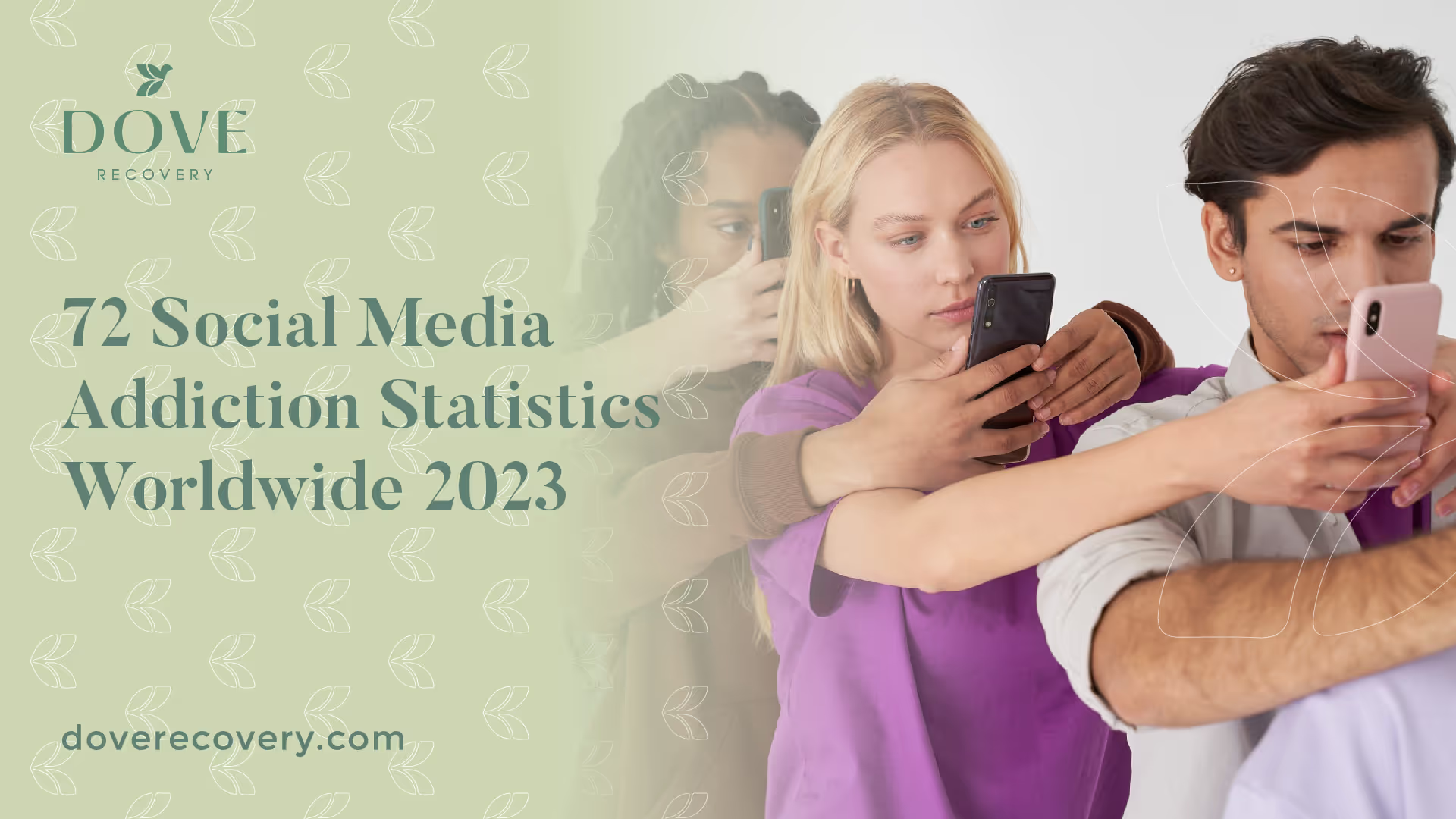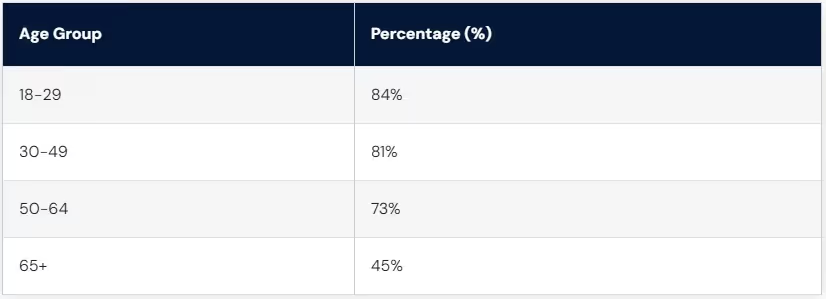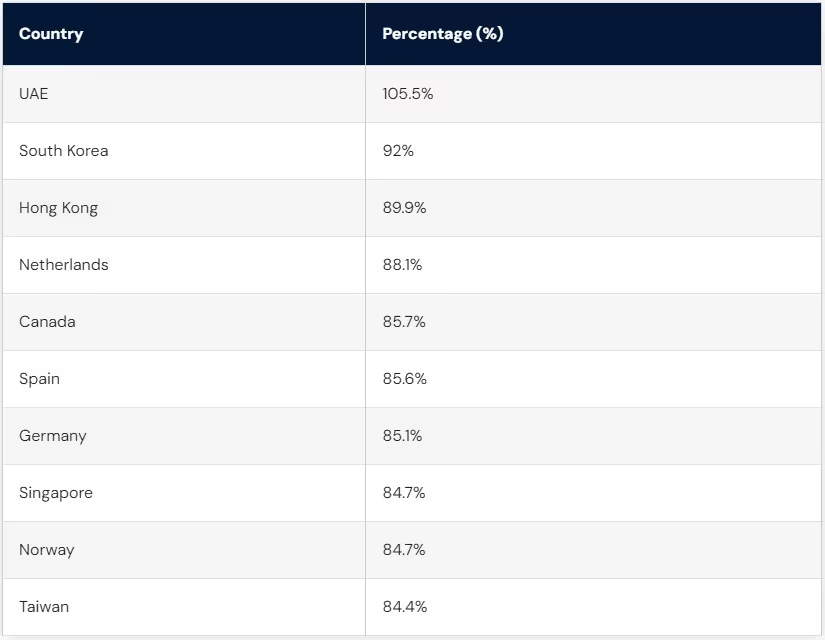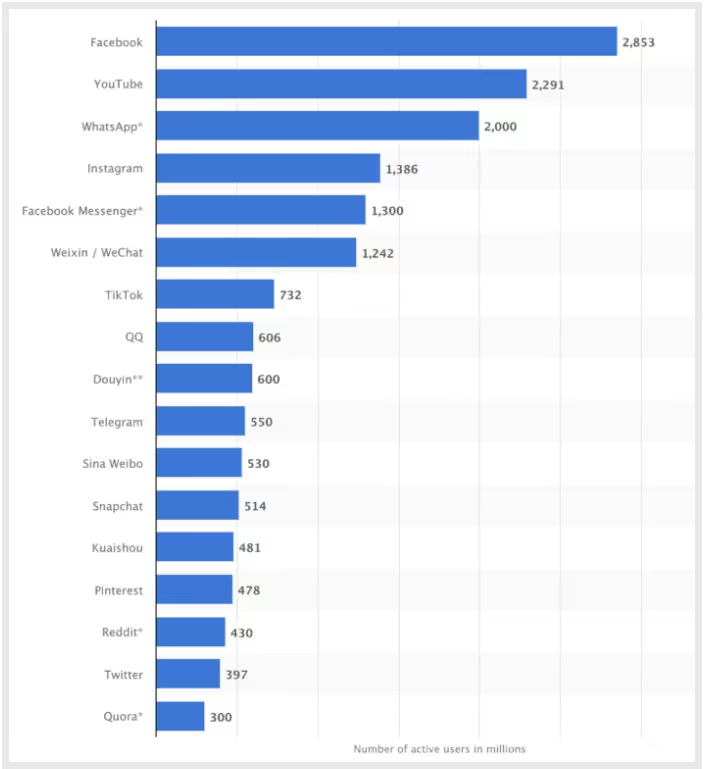72 Social Media Addiction Statistics Worldwide 2023


Social media has become an integral part of our lives, with billions of people worldwide using it every day. However, with the increasing use of social media, addiction to it has become a growing concern. In this article, we'll dive into social media addiction statistics as of 2023 to better understand the scope of this issue.
Key Social Media Addiction Statistics:
- According to a recent study, the average person spends nearly 2.5 hours per day on social media. That's roughly 17.5 hours per week!
- The number of social media users worldwide is expected to reach 4.41 billion in 2025, up from 3.78 billion in 2021.
- A survey conducted by Common Sense Media found that 72% of teens feel the need to immediately respond to notifications on social media.
- The same survey found that 59% of parents feel their teen is addicted to their mobile device.
- A study conducted by the University of Pennsylvania found that students who limited their social media use to 30 minutes per day experienced significant reductions in anxiety, depression, loneliness, and FOMO (fear of missing out).
- The same study found that students who continued to use social media as usual experienced no significant improvement in their mental health.
- A survey by the Royal Society for Public Health found that Instagram is the most damaging social media platform for young people's mental health, followed by Snapchat and Facebook.
- 78% of Americans aged 18-24 say they use social media multiple times per day, while only 22% say they use it once per day or less.
- A survey by the Pew Research Center found that 59% of all social media users say it would not be hard to give up social media, while 40% say it would be very or somewhat hard to do so.
- The same survey found that 29% of social media users say they feel "pressure" to share only content that makes them look good.
These statistics show that social media addiction is a real and growing problem. While social media can be a great way to connect with others and stay informed, it's important to be aware of how much time we're spending on these platforms and to take steps to limit our use if necessary.
How Many People are Addicted to Social Media?
- According to a 2023 report by Hootsuite, the majority of social media users are under the age of 35. In fact, 90% of Instagram users and 78% of Snapchat users fall into this age group.
- However, social media use is not limited to younger generations. The same report found that Facebook still has a significant user base, with over half of its users over the age of 35.
- Additionally, social media use varies significantly by country and region. For example, in North America, 69% of adults use social media, while in East Asia, that number drops to just 47%.
- Gender also plays a role in social media use. Women are more likely than men to use platforms like Facebook and Instagram, while men are more likely to use platforms like Twitter and LinkedIn.
- Finally, it's important to note that not everyone uses social media. While it may seem ubiquitous in our daily lives, there are still many people who choose not to engage with these platforms for various reasons.
Social Media Worldwide Usage Statistics:
- The number of social media users worldwide is projected to reach 4.41 billion by 2025, up from 3.78 billion in 2021.
- Social media penetration rates vary widely by region, with North America having the highest rate at 70%, followed by South America at 66%, and Africa having the lowest rate at just 12%.
- Despite Africa's low social media penetration, it has seen significant growth in recent years.
- China has the largest number of social media users in the world, with over a billion people using these platforms.
- India is the second-largest market for social media, with around 450 million users.
- The United States has approximately 300 million social media users.
- There are still many countries where access to social media platforms is restricted or banned altogether, such as China's "Great Firewall" that blocks access to Western platforms like Facebook and Twitter.
These statistics highlight the widespread use of social media across the globe, but also underscore the complex nature of this landscape and the various factors that shape it. These factors can include cultural differences, political considerations, and advancements in technology.
Social Media Usage By Age
Understanding social media usage by age is crucial in gauging the impact and reach of these platforms. According to recent data, social media use varies significantly by age group.
- The highest percentage of social media users are aged between 16 and 24 years old, with a staggering 90% using at least one platform regularly.
- The second-largest group of users are between the ages of 25 and 34, with around 80% using social media.
- Social media use drops off steadily as age increases. For example, around 50% of those aged between 45 and 54 use social media regularly.
- Only around a quarter of those aged over 65 use social media.

These statistics highlight the importance of targeting specific age groups when developing marketing strategies or analyzing trends on social media. It's clear that younger generations are much more likely to be active on these platforms than older ones. However, it's also important to consider that this trend may shift as technology continues to evolve and become more accessible to all ages.
Which Gender Uses Social Media More By Platform?
While social media usage is widespread across both genders, there are some differences when it comes to which platforms each gender prefers. According to recent data:
- Women are more likely than men to use Facebook and Instagram. In fact, around 43% of women use Facebook compared to just 31% of men. Similarly, 39% of women use Instagram compared to just 30% of men.
- Men, on the other hand, are more likely than women to use LinkedIn and Twitter. Around 24% of men use LinkedIn compared to just 19% of women, while around 24% of men use Twitter compared to just 21% of women.
- Snapchat usage is roughly equal between genders, with around 55% of users identifying as female and around 45% identifying as male.

These statistics highlight the importance of considering gender when developing marketing strategies or analyzing trends on specific social media platforms. While some platforms may have a relatively even split between genders, others may be heavily skewed towards one gender or the other. Understanding these nuances can help businesses tailor their messaging and content for maximum impact.
Social Media Usage By Country
Social media usage varies significantly by country, with some nations having much higher penetration rates than others. Here are some key social media usage statistics for select countries:
- In the United States, around 70% of adults use social media, with Facebook being the most popular platform.
- In China, over a billion people use social media platforms like WeChat and Weibo, making it the largest social media market in the world.
- In India, around 34% of the population uses social media, with WhatsApp being the most widely used platform.
- Brazil has one of the highest social media penetration rates in the world at 71%, with WhatsApp being the most popular app.
- Japan has a relatively low social media penetration rate at just 47%, with LINE being the most popular platform.
- Nigeria has seen significant growth in recent years and now has a social media penetration rate of around 25%, with Facebook being the most widely used platform.
The results might surprise you when looking at internet users that are active on social media in each country.

These statistics show that while social media is ubiquitous across much of the globe, there are still significant differences in usage patterns based on cultural and economic factors. Businesses looking to expand their reach through social media must be aware of these nuances to effectively target their desired audience.
What Are The Most Used Social Media Platforms?
While social media usage varies by country and region, certain platforms are consistently among the most used worldwide. Here are some of the top social media platforms as of 2023:
- Facebook - With over 2.8 billion monthly active users, Facebook remains the largest social media platform in the world. It's particularly popular among older generations, with around half of all adults aged 65 or older using the site.
- YouTube - As a video-sharing platform, YouTube has a slightly different user base than other social media sites. However, its popularity is undeniable, with over 2 billion monthly active users and an average watch time of over one hour per day.
- WhatsApp - This messaging app is particularly popular outside of North America and Europe, with around 2 billion monthly active users worldwide.
- Instagram - With over 1 billion monthly active users, Instagram is a hugely popular platform for sharing photos and videos. It's particularly popular among younger generations, with around two-thirds of all users under the age of 35.
- TikTok - This short-form video app has exploded in popularity in recent years, particularly among younger generations. As of 2023, it has over 1 billion monthly active users worldwide.
- WeChat - While not as well-known in North America or Europe, WeChat is hugely popular in China and other parts of Asia. It has around 1 billion monthly active users and offers a wide range of features beyond just messaging.

These platforms represent just a few examples of the many social media sites available today. Businesses looking to expand their reach through social media should carefully consider which platforms their target audience uses most frequently to ensure maximum impact.
How Many Social Media Accounts Does The Average Person Have?
According to a survey conducted by GlobalWebIndex in 2021, the average internet user has around 8 social media accounts. However, this number varies significantly by age group and region. For example, younger generations tend to have more accounts than older ones, with those aged between 16 and 24 having an average of around 10 accounts. Additionally, social media usage is more widespread in some regions than others, which can also impact the number of accounts an individual has. It's important to note that having multiple social media accounts doesn't necessarily equate to addiction or excessive use. Many people use different platforms for different purposes and may not be active on all of their accounts at all times.

How Much Time Do People Spend On Social Media?
One of the most concerning aspects of social media addiction is the amount of time people spend on these platforms. Studies have shown that excessive social media use can lead to negative mental health outcomes, and one of the main culprits is the amount of time spent scrolling through feeds and engaging with content.
According to a survey by GlobalWebIndex, the average person spends around 2 hours and 24 minutes per day on social media. This equates to almost 17 hours per week, or over two full workdays.
However, it's important to note that this number varies significantly by age group. Younger generations tend to spend much more time on social media than older ones, with those aged 16-24 spending an average of around 3 hours per day on these platforms.
Additionally, certain countries and regions have higher rates of social media use than others, which can further impact the amount of time individuals spend online. For example, in Southeast Asia, where social media is extremely popular, users spend an average of over three hours per day on these platforms.
These statistics highlight the importance of being aware of how much time we're spending on social media and taking steps to limit our use if necessary. While these platforms can be valuable tools for communication and entertainment, excessive use can have serious negative consequences for our mental health and well-being.
Social Media Addiction FAQ
As social media use continues to grow, concerns about addiction and overuse are becoming increasingly common. Here are some frequently asked questions about social media addiction:
What is social media addiction?
Social media addiction refers to the excessive use of social media platforms that interferes with daily life and has negative impacts on mental health and well-being. Symptoms of social media addiction can include spending excessive amounts of time on these platforms, feeling anxious or irritable when unable to access them, neglecting responsibilities or relationships due to social media use, and experiencing negative mental health outcomes like depression or anxiety.
How common is social media addiction?
While there is no official diagnosis for social media addiction, research suggests that it is a growing problem among many individuals. Studies have shown that around 5-10% of users exhibit symptoms of addictive behavior related to their social media use.
What are the negative impacts of social media addiction?
Excessive use of social media can have many negative impacts on mental health and well-being. It can lead to feelings of isolation, anxiety, depression, and low self-esteem. Additionally, it can interfere with relationships and work responsibilities, leading to decreased productivity and increased stress levels.
How can I tell if I'm addicted to social media?
If you're concerned about your own social media use, there are several signs that may indicate a problem. These include spending excessive amounts of time on these platforms each day, feeling anxious or irritable when unable to access them, neglecting responsibilities or relationships due to social media use, and experiencing negative mental health outcomes like depression or anxiety.
What can I do if I think I'm addicted to social media?
If you're concerned about your own social media use, there are several steps you can take to address the issue. First, consider setting limits on your use by reducing the amount of time you spend on these platforms each day. Additionally, consider seeking support from a mental health professional or joining a support group to help you overcome your addiction. Finally, make sure to prioritize self-care and engage in activities that bring you joy and fulfillment beyond social media use.
Sources:
- "Digital 2021: Global Overview Report" by We Are Social and Hootsuite
- "Social Media, Social Life: Teens Reveal Their Experiences" by Common Sense Media
- "No More FOMO: Limiting Social Media Decreases Loneliness and Depression" by the University of Pennsylvania
- "Status of Mind" by the Royal Society for Public Health
- "Social Media Use in 2021" by the Pew Research Center
